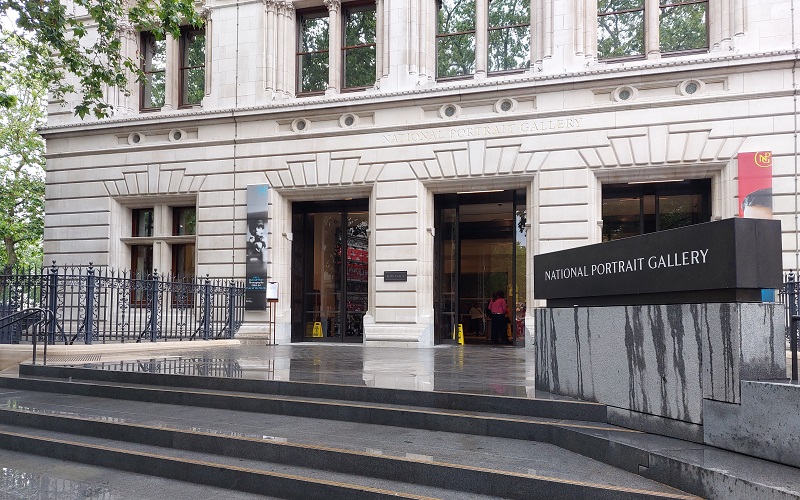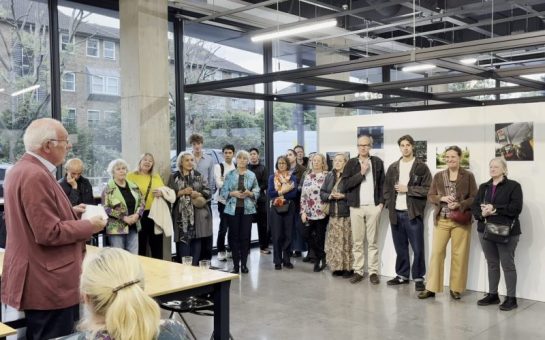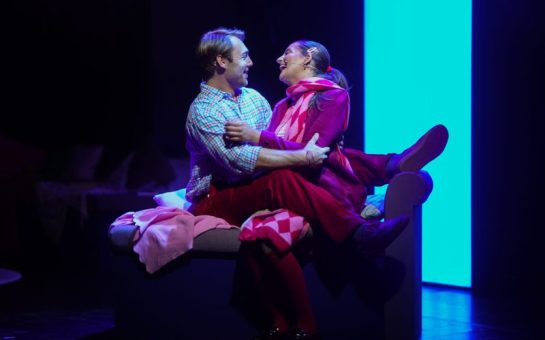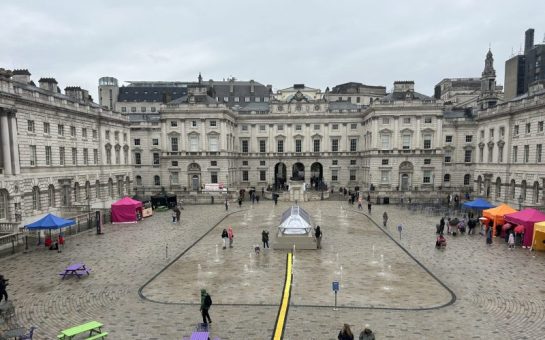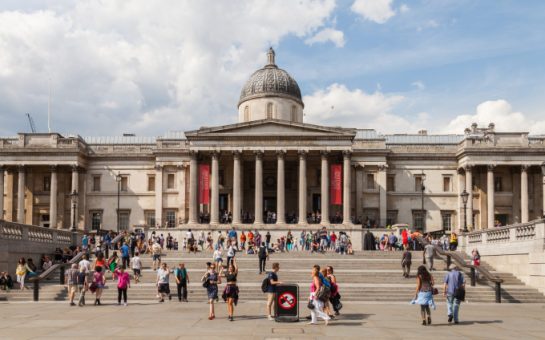One of the National Portrait Gallery’s first temporary exhibitions since reopening is a collection of unseen photographs taken by Sir Paul McCartney as Beatlemania engulfed the world.
Paul McCartney, Photographs 1963–1964: Eyes of the Storm, was proposed to the gallery by the Beatle himself, after a collection of over 1,000 photographs was discovered in his archive.
Taking the viewer on a journey through Liverpool, Paris and the band’s first US trip, as I Want to Hold your Hand topped the charts, the exhibition is a self-styled peak behind the veil of burgeoning stardom.
The much-publicised shots accompanying Eyes of the Storm‘s announcement are a red herring in terms of the overall direction.
The early ‘selfies’ of McCartney photographing himself are an anomaly with the exhibition offering little in the way of dialogue with today’s endless celebrity self-curation.
Instead, the dominant tone is one of outward-looking fascination from within a sea of new and novel experiences.
At first glance, moving through the opening rooms centred on Liverpool and Paris those experiences seem to have been rather dull.
The viewer is greeted with a series of staid, semi-candid portraits that don’t reveal much about the subject.
Starr is caught off-guard in seemingly every picture, Lennon appears pensive, and ‘fifth Beatles,’ producer George Martin and manager Brian Epstein look dapper and, understandably, rather pleased with themselves.
The photographs, mostly taken backstage or in transit, don’t evoke intimacy, as much as restlessness, a feeling accorded more to the photographer, than his subject.
It’s easy to imagine McCartney popping up impishly behind the scenes, surprising everyone as they waited for a flight to end or a meeting to start.
That the photography itself isn’t much to write about is beside the point, the exhibition’s value lying in the taker and their unique perspective, along with our knowledge of what was to come.
The inclusion of misaligned New York skylines or an off-kilter snap of the causeway to Miami Beach, imbuing the journey with rollercoaster precarity, possess the everyman-quality tourist snaps.
Despite this lack of technical ability, there’s still a poignancy to the images: their amateur nature reminding you of how young and the group were in the face of the juggernaut of success hurtling towards them.
The most engaging shots are those taken of members of the public.
It’s here that the McCartney exhibition feels most aligned to the gallery’s broader modernisation efforts, democratising its ability to immortalise by spotlighting those noted for activism, as well as more obscure artistic contributions.
Speaking to curators before the opening, McCartney said: “I was always imagining the lives of people I did not know, whose story I will never know.”
Those shots capture a sincere fascination with the lives of ordinary people, at a point when the trajectory of his own was veering rapidly away from anything ordinary.
In the New York room is a fantastic shot of a business class passenger, eyebrow raised in quizzical disapproval, as McCartney sneaks a picture of him through the first-class partition.
This serves in brilliant contrast to a photograph of two paparazzi taken in Central Park, the alien eyes of the camera lens leering at McCartney as he responds in kind.
The cat and mouse of watching and being watched is ever-present in the latter stages of the exhibition.
In Washington DC, a young girl stares serenely into the back of the Beatles car, her disbelieving pleasure at being in the presence of a Beatle a sweet counterbalance to the hysteria.
Artistically, it’s also a pleasing departure from shots of the band’s girlfriends, who frequently serve as bland ingenues, contributing little to the images.
In one ludicrous image taken on the band’s Miami holiday, Harrison stares evenly into the lens, as a girl clad in a startling sunburst-yellow bikini, head severed by the frame, serves him a drink.
That minor indiscretion aside, the McCartney exhibition offers a relatively wholesome retrospective of The Beatle’s early fame, inviting the viewer to connect with the four Liverpool lads before they became global icons.
